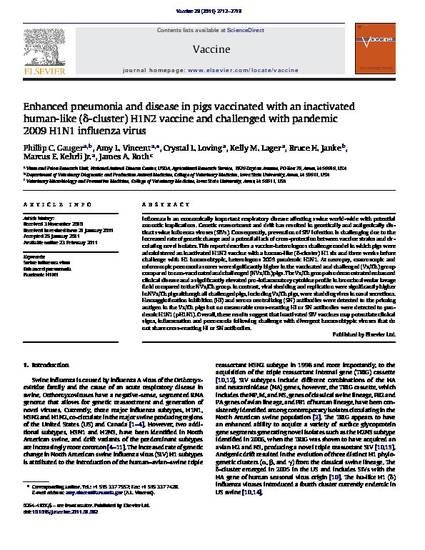
Influenza is an economically important respiratory disease affecting swine world-wide with potential zoonotic implications. Genetic reassortment and drift has resulted in genetically and antigenically distinct swine influenza viruses (SIVs). Consequently, prevention of SIV infection is challenging due to the increased rate of genetic change and a potential lack of cross-protection between vaccine strains and circulating novel isolates. This report describes a vaccine-heterologous challenge model in which pigs were administered an inactivated H1N2 vaccine with a human-like (δ-cluster) H1 six and three weeks before challenge with H1 homosubtypic, heterologous 2009 pandemic H1N1. At necropsy, macroscopic and microscopic pneumonia scores were significantly higher in the vaccinated and challenged (Vx/Ch) group compared to non-vaccinated and challenged (NVx/Ch) pigs. The Vx/Ch group also demonstrated enhanced clinical disease and a significantly elevated pro-inflammatory cytokine profile in bronchoalveolar lavage fluid compared to the NVx/Ch group. In contrast, viral shedding and replication were significantly higher in NVx/Ch pigs although all challenged pigs, including Vx/Ch pigs, were shedding virus in nasal secretions. Hemagglutination inhibition (HI) and serum neutralizing (SN) antibodies were detected to the priming antigen in the Vx/Ch pigs but no measurable cross-reacting HI or SN antibodies were detected to pandemic H1N1 (pH1N1). Overall, these results suggest that inactivated SIV vaccines may potentiate clinical signs, inflammation and pneumonia following challenge with divergent homosubtypic viruses that do not share cross-reacting HI or SN antibodies.
Available at: http://works.bepress.com/james_roth/42/

This article is from Vaccine 29 (2011): 2712, doi:10.1016/j.vaccine.2011.01.082.